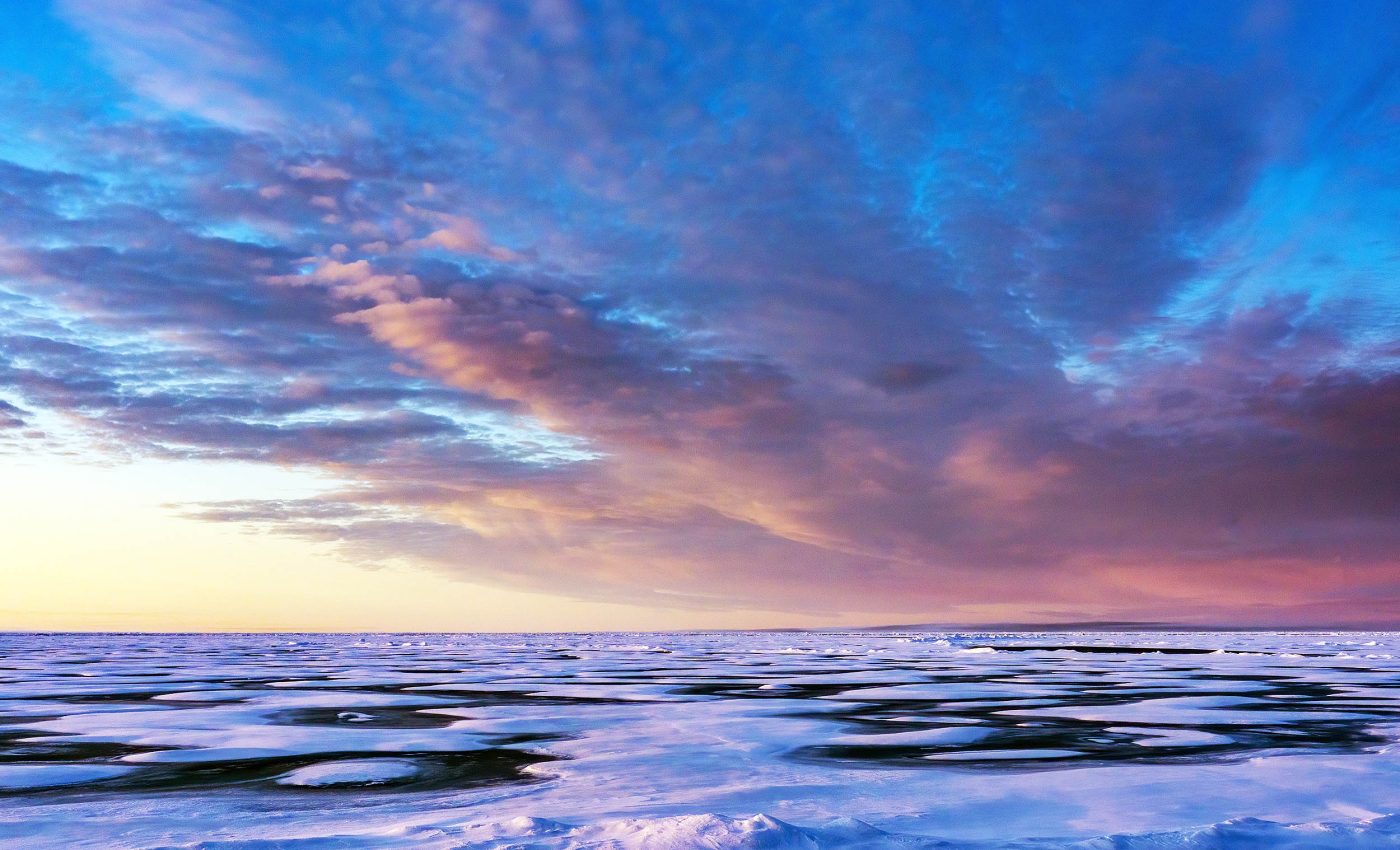
Clouds also fuel Arctic warming, not just carbon emissions
For years, climate scientists have struggled to explain the warming of the Arctic and why it is heating up three to four times faster than the planet as a whole.
Traditional climate models capture some of that “Arctic amplification,” but they still fall short of the temperature spikes involving clouds which have been recorded in recent decades.
A new study from Kyushu University points the finger at an unlikely culprit: mixed-phase clouds that behave like a thermal blanket during the polar night, trapping more heat than most models assume.
Why the Arctic’s thermal blanket matters
Mixed-phase clouds – low-lying decks that contain both ice crystals and supercooled liquid droplets – dominate Arctic skies.
In summer, when the sun never sets, they act like a parasol, reflecting incoming sunlight back into space and slowing surface warming.
In winter, when sunlight fades for weeks, those same clouds flip their role. With no solar rays to reflect, they trap long-wave radiation emitted by the ice and ocean below and reradiate it downward, warming the surface.
“However, how well these mixed-phase clouds trap heat depends on their ratio of ice to liquid,” explained lead author Momoka Nakanishi, a graduate researcher at Kyushu University.
“The more liquid water the clouds contain, the better they are at trapping heat. But many climate models have a large bias in representing this ratio, causing incorrect predictions.”
Nakanishi and her adviser, associate professor Takuro Michibata of Kyushu University’s Research Institute for Applied Mechanics, suspected that inaccurate cloud physics might be hiding a large chunk of the Arctic’s missing heat.
To test the idea, they examined 30 leading climate models and compared their simulated wintertime cloud properties with a decade of satellite observations over the polar seas.
Ice-heavy models miss today’s heat
The comparison yielded a stark result: 21 of the 30 models over-predicted the proportion of ice crystals relative to liquid droplets in Arctic winter clouds.
Ice-heavy clouds emit less infrared radiation back to the surface than liquid-rich ones, so models with too much ice systematically underestimate the present-day greenhouse effect of clouds.
“These ice-dominant models are not properly accounting for the present-day warming potential of the clouds during the winter. That’s why they cannot account for the rapid warming we are currently seeing,” Nakanishi said.
By adjusting the models to match observed ice-to-liquid ratios, the researchers closed much of the gap between simulated and observed warming.
The finding suggests that fine-scale cloud microphysics – droplet nucleation, crystal growth, and the freezing of super-cooled water – hold outsized influence over regional climate.
Warming Arctic: Clouds on the ceiling
Paradoxically, the same modeling error means many simulations may overstate future warming. In a warmer Arctic, mixed-phase clouds naturally shift toward higher liquid content, enhancing their heat-trapping ability in a mechanism known as cloud emissivity feedback.
But there is a ceiling: once a cloud becomes mostly liquid, it behaves like a near-perfect blackbody, fully absorbing and re-emitting thermal radiation. Beyond that point, additional warming does not greatly increase its greenhouse effect.
Many of the surveyed models, because they start out too icy, anticipate a larger future shift toward liquid content than observations justify.
They therefore project a stronger, longer-lasting emissivity feedback and exaggerate the Arctic’s eventual temperature rise. Correcting present-day biases narrows that projection.
Implications for global climate prediction
Cloud processes remain one of the largest uncertainties in climate science. “The biggest uncertainty in our forecasts is due to clouds,” Michibata said.
“Fixing these models is essential not just for the Arctic, but for understanding its impact on weather and climate change across the globe.”
The stakes extend well beyond the high latitudes. A warmer Arctic can warp the jet stream, influencing extreme weather events in North America, Europe, and Asia – involving much more than clouds.
Sea-ice losses accelerate, opening shipping routes but also exposing darker ocean water that absorbs more heat.
Permafrost thaws, releasing carbon and methane that further amplify warming. Getting cloud physics right will sharpen projections for all these knock-on effects.
Cloud radar helps prevent Arctic warming
The team drew on satellite data from NASA’s CloudSat and CALIPSO missions, which use radar and lidar to distinguish ice and liquid layers inside clouds.
They then compared these observations with outputs from models participating in the Coupled Model Intercomparison Project Phase 6 (CMIP6), the same ensemble that informs the Intergovernmental Panel on Climate Change reports.
By ranking models according to their liquid-fraction bias, the researchers could quantify how that bias translated into temperature error.
Next steps: Toward better microphysics
Fixing the problem will require both new observations and refined parameterizations of microphysical processes inside model grid cells.
Small-scale experiments using aircraft and ground-based lidar could reveal how aerosols, humidity, and temperature cooperate to keep droplets liquid at −20 °C or colder – a common state in the Arctic.
Incorporating those insights into global models could, in turn, tighten projections for mid-latitude storm tracks and even tropical rainfall.
For now, the study delivers a clear message: the Arctic’s runaway warming cannot be understood – or slowed – without an accurate account of what happens inside its low, grey winter clouds. Addressing that microscopic uncertainty could make a macroscopic difference for the entire planet.
The study is published in the journal Ocean-Land-Atmosphere Research.
—–
Like what you read? Subscribe to our newsletter for engaging articles, exclusive content, and the latest updates.
Check us out on EarthSnap, a free app brought to you by Eric Ralls and Earth.com.
—–













